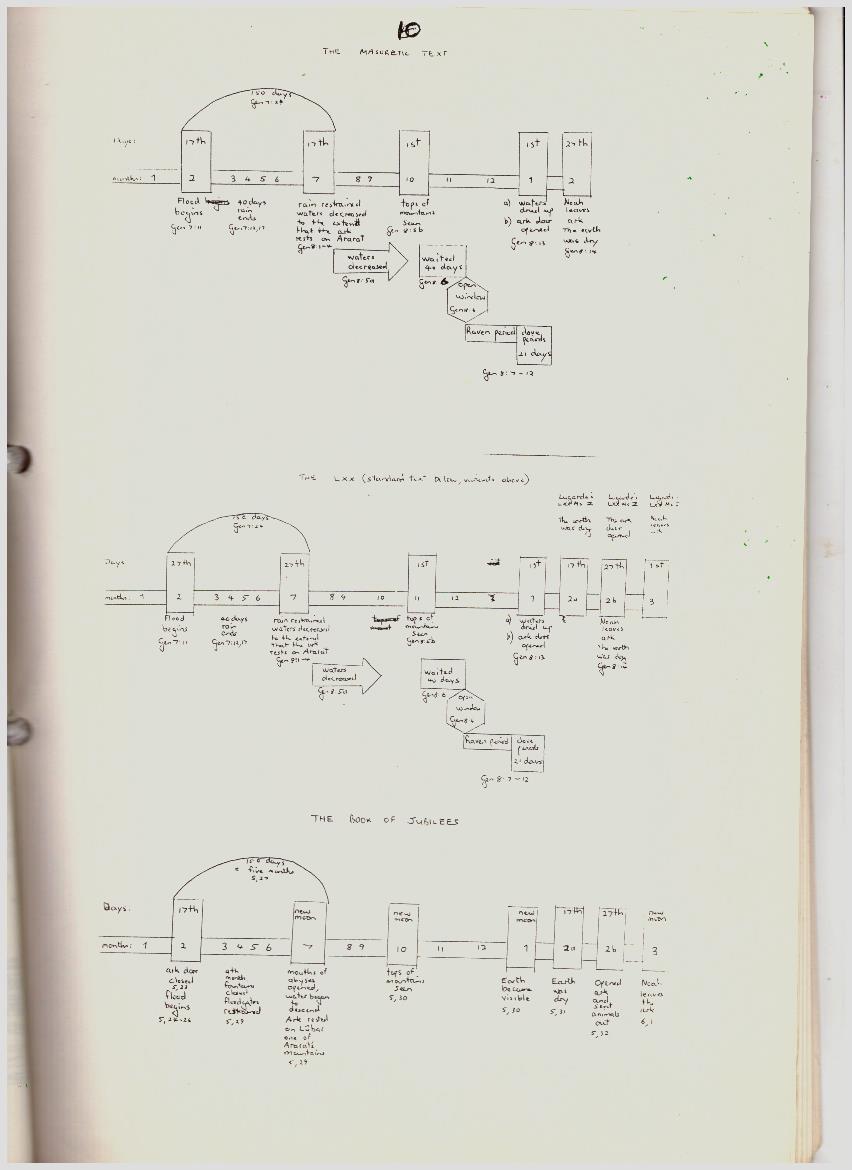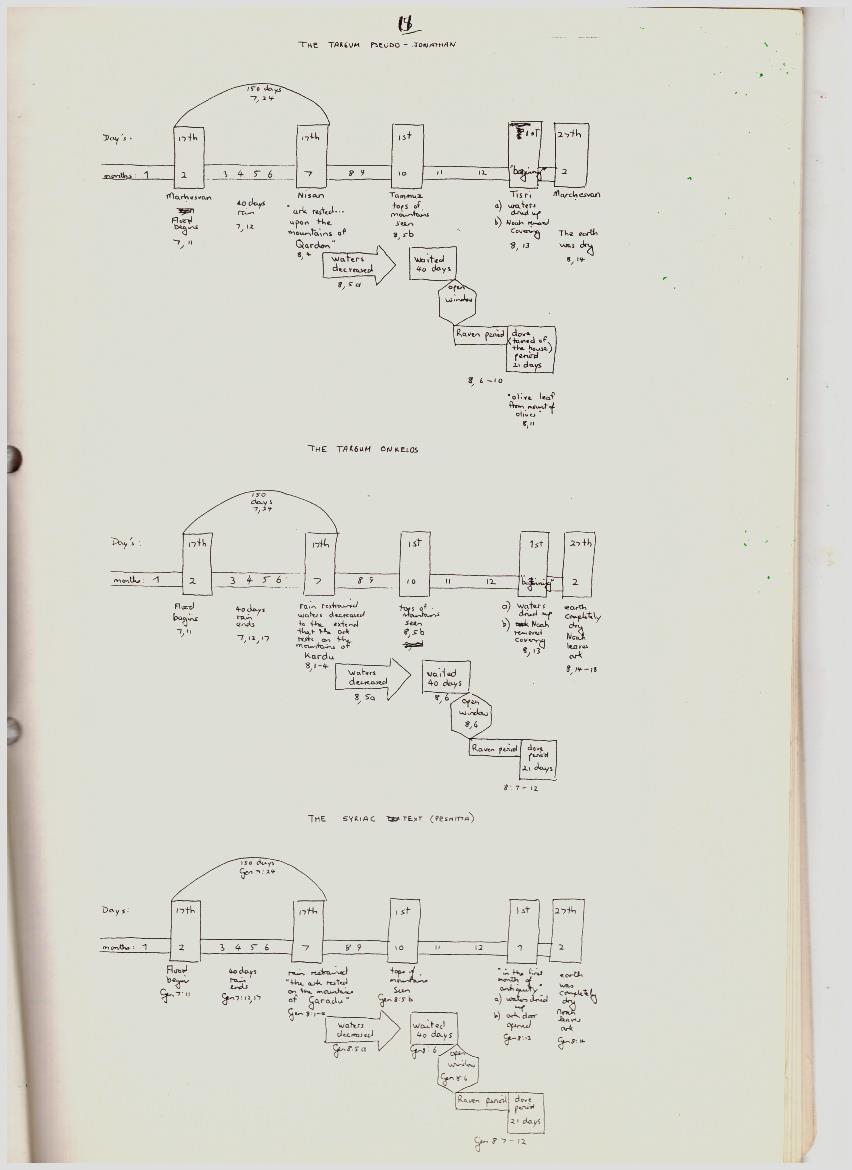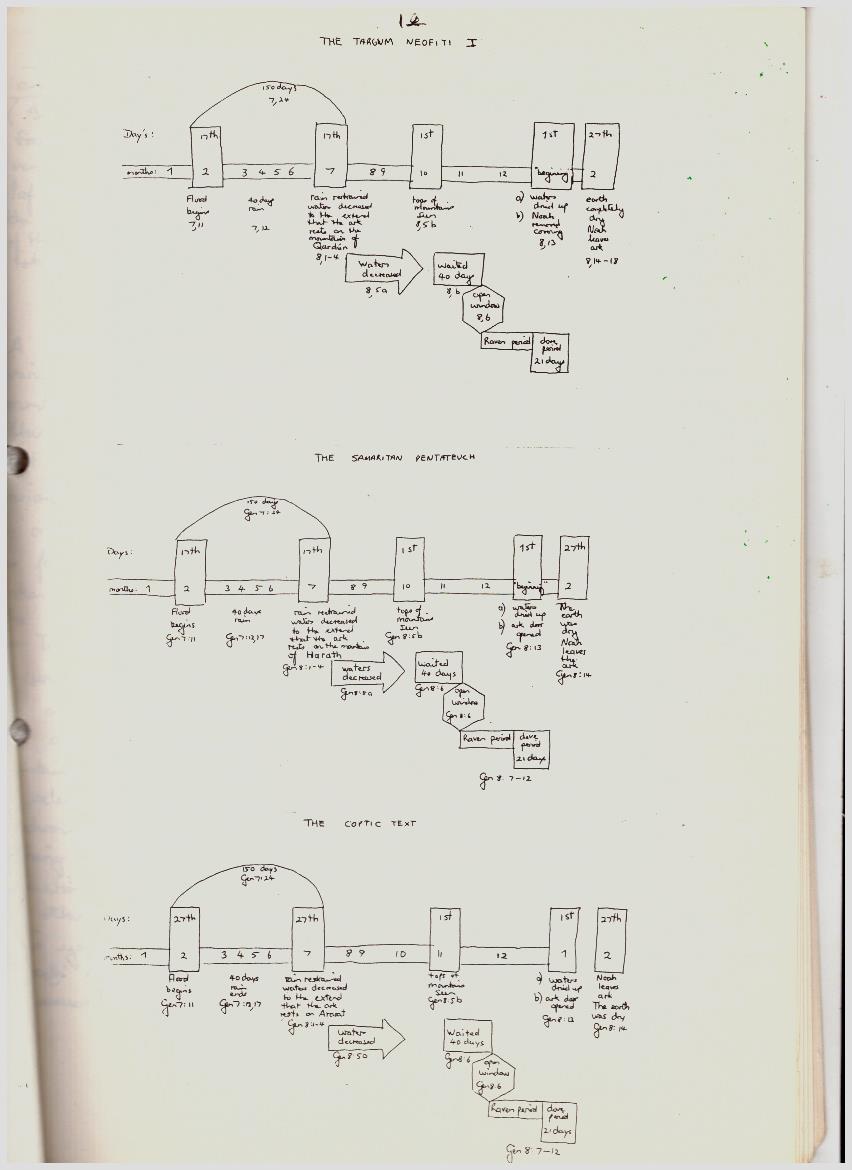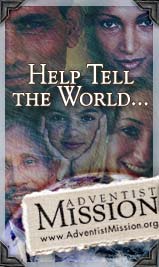Flood-Calendar of Noah in the Versions Koot van Wyk (DLitt et Phil; ThD) The Flood of Noah in 2692 BCE is
biblically calculated with absolute exactness. Not one year too short or one
year too long. The calendar of events during this Flood are mentioned like a
reading from a diary. With precision. Bible? Which Version? Version is not the
KJV or ASB or RSV or Jerusalem Bible, but which ancient version or language
represent the correct Calendar of the Flood in Genesis?
This brings the discussion to
Text-Theory. The epistemology of the researcher will determine the text that
the researcher will favor above other texts for his/her prooftext. Wonderfully
put, but actually this is a fallacy. The ontology of the researcher will
determine the epistemology and that will determine the method employed and
mathematically the outcome will follow the method. I did not say it first it
was Hendrik Stoker the Calvinist Christian Philosopher of Stellenbosch
University in his book: Oorsprong en Rigting, translated as Origin
and Destiny, my alma mater. Ancient Versions can be listed: Masoretic Text
[Hebrew Text from Codex Alleppo in 1008 A.D.]; the so-called LXX or Septuagint
[an elusive term]; the Book of Jubilees [extrabiblical source though but
containing the calendar also]; Targum Pseudo-Jonathan; Targum Onkelos; Syriac
[some claim it is elusive too]; Targum Neofiti I; Samaritan Pentateuch [also an
elusive term]; Coptic Text [elusive at times]. Why is nearly all these ancient
texts “elusive”. Well, the reason is simple: nearly all of their earliest
manuscripts are dating over 500 years after their original writing. Researchers
do not have the originals. That is where Text-Theory kicks in. Which one is
more important or more correct than the other? Text-Theory describes this. You
can say it is a case of following Lagarde or Kahle but that is not so simple.
You can also say that it is a matter of choosing between a Standard Text
approach or a multi-textual approach. Especially the latter one is popular and
is called the eclectic method, or pick-and-choose approach to designing the
original texts. Designing yes, because it is a task of reconstruction to exist
of what is not existing. But how can you reconstruct a text if you do not know
what the norm is towards which you are reconstructing? Quantity approach?
Voting in numbers and talking in descriptive language of “most”, “many” therefore
that is it? Elusive really. What about a better quality and a worse quality?
Who determines the better and who the worse? What determines that? Now here may
be the key. Obviously the translations came after the original Hebrew and
Aramaic texts [in Daniel and Ezra]. Hebrew was the original so that is the
standard from which one can measure the right or wrong translation. Is it
elusive too? Many scholars argue that is the case. The Majority argue that way?
I do not. My argument admits that the Hebrew texts to our disposal dates late
to the Masoretic times of 1008 A.D. in Codex Aleppo but is this text
disqualified from been a standard to earlier translations? Most scholars answer:
yes. My answer: no. Why? Because Qumran on Daniel is 99.9% in exactitude to
Codex Aleppo in 1008 A.D. thus proving that the text of Daniel in Aleppo was so
carefully copied and transmitted over a period of 1200 years that one may
extend this carefulness over the whole text of Codex Aleppo for it carefulness.
It must be the original. No version match this excellent precision in
transmission. Period. That settles it for the Standard. Hebrew is the original
and anything that do not compare with that is wrong. What about Immanuel Tov
suggesting that multiple texts existed in the Second Temple period because of
Qumran? Consensus says yes since F. M. Cross study on Samuel from Cave 4, I say
no. I am not the first to say no. Izak Eybers said so in the 1960’s on a
restudy of this work of Cross. I agree with Eybers. What we have at Qumran are
not “multiple texts” but “degenerative texts”. Many of them landed in the caves
because they had too many errors in them. According to Martin in 1958 the
Isaiah scroll from cave 1 was corrected by multiple scribes which he could
identify. They were sometimes not biblical texts but para-biblical texts. That
is where Tov et al went wrong. They actually knew what I am talking about but
they kept their sensational stories about the LXX and other matters for
popularity and other reasons. Investigation proves otherwise. See for yourself.
So below I am going to use the Masoretic text as the Standard for the Flood
Calendar of Noah and any Version that differ is in error. This is not the way
Johann Cook taught me at Stellenbosch but after my own research of years I have
to differ with his eclectic approach. 


글 수 2,546
















